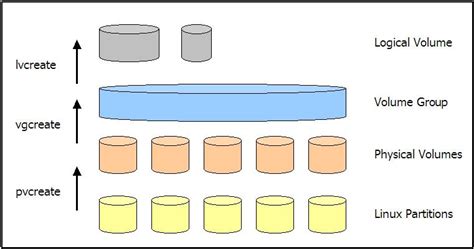lv display | 5.4.13. Displaying Logical Volumes lv display In LVGL, an lv_display_t (not to be confused with a Screen) is a data type that represents a single display panel — the hardware that displays LVGL-rendered pixels on your device. During . updated Sep 30, 2019. In Fire Emblem: Three Houses, each class that you can become has its own experience bar - separate from unit experience to gain levels, or skill experience to.If you reclassed at level 20, the game adds 10 of those levels, counting her as level 50. If she reclassed twice at level 20, the game adds 20 of those levels, counting her as level 60..
0 · lvdisplay(8) — Linux manual page
1 · Display (lv
2 · 5.4.13. Displaying Logical Volumes
By Las Vegas Sun Staff. A person was detained and questioned after a fire destroyed an apartment building this morning, displacing 21 people, according to the Clark County Fire Department. No.Fire Mage Leveling Guide. Once you reach max level, it can be somewhat overwhelming to completely change the way you play by suddenly implementing a large number of addons in a short space of time, especially if they have a .
lvdisplay shows the attributes of LVs, like size, read/write status, snapshot information, etc. lvs (8) is a preferred alternative that shows the same information and more, using a more compact .There are three commands you can use to display properties of LVM logical volumes: lvs, lvdisplay, and lvscan. The lvs command provides logical volume information in a configurable .
In LVGL, an lv_display_t (not to be confused with a Screen) is a data type that represents a single display panel — the hardware that displays LVGL-rendered pixels on your device. During .
what is the wholesale price of a rolex
In this tutorial we explore lvdisplay command which is used to display the logical volume status and many other details such as name, UUID, status, size etc.lvdisplay shows the attributes of LVs, like size, read/write status, snapshot information, etc. lvs (8) is a preferred alternative that shows the same information and more, using a more compact and configurable output format.There are three commands you can use to display properties of LVM logical volumes: lvs, lvdisplay, and lvscan. The lvs command provides logical volume information in a configurable form, displaying one line per logical volume.In LVGL, an lv_display_t (not to be confused with a Screen) is a data type that represents a single display panel — the hardware that displays LVGL-rendered pixels on your device. During system initialization, you must do the following for each display panel you want LVGL to use: create an lv_display_t object for it, assign a Flush Callback .
lvdisplay [1] allows to Display information about a logical volume (LV) and it is part of Linux LVM implementation. # lvdisplay With no arguments will display all your LVs. # lvdisplay /dev/vg0/lv-0. --- Logical volume --- LV Path /dev/vg0/lv-0. LV Name lv-0. VG Name vg0.
lvdisplay(8) — Linux manual page
This command is used to display information about Logical Volume Manager (LVM) logical volumes. It is a useful tool for managing storage systems and analyzing the configuration of logical volumes. The lvdisplay command provides details such as the logical volume name, volume group, size, allocation type, and more. Command: lvdisplay. We have seen above how to create LV, now we will see how to view details of it. This command is the same as pvdisplay for PV and vgdisplay for VG. It shows you details like name, volume group it belongs to, size, permission, status, allocation policy, etc. # lvdisplay /dev/vg01/lvol1. --- Logical volumes ---
 — Linux manual page .jpg)
If you want to see the details of the volume in a Volume Group, you can use the lvdisplay command. Below is an example of lvdisplay command. Here, Vol1 is the Volume Group name. $ sudo lvdisplay Vol1. --- Logical volume --- LV Path /dev/Vol1/lvtest. LV .lvdisplay shows the attributes of LVs, like size, read/write status, snapshot information, etc. lvs (8) is a preferred alternative that shows the same information and more, using a more compact and configurable output format.
lvdisplay allows you to see the attributes of a logical volume like size, read/write status, snapshot information etc. lvs (8) is an alternative that provides the same information in the style of ps (1). lvs (8) is recommended over lvdisplay.
In this tutorial we explore lvdisplay command which is used to display the logical volume status and many other details such as name, UUID, status, size etc.lvdisplay shows the attributes of LVs, like size, read/write status, snapshot information, etc. lvs (8) is a preferred alternative that shows the same information and more, using a more compact and configurable output format.
There are three commands you can use to display properties of LVM logical volumes: lvs, lvdisplay, and lvscan. The lvs command provides logical volume information in a configurable form, displaying one line per logical volume.
In LVGL, an lv_display_t (not to be confused with a Screen) is a data type that represents a single display panel — the hardware that displays LVGL-rendered pixels on your device. During system initialization, you must do the following for each display panel you want LVGL to use: create an lv_display_t object for it, assign a Flush Callback . lvdisplay [1] allows to Display information about a logical volume (LV) and it is part of Linux LVM implementation. # lvdisplay With no arguments will display all your LVs. # lvdisplay /dev/vg0/lv-0. --- Logical volume --- LV Path /dev/vg0/lv-0. LV Name lv-0. VG Name vg0. This command is used to display information about Logical Volume Manager (LVM) logical volumes. It is a useful tool for managing storage systems and analyzing the configuration of logical volumes. The lvdisplay command provides details such as the logical volume name, volume group, size, allocation type, and more.
Command: lvdisplay. We have seen above how to create LV, now we will see how to view details of it. This command is the same as pvdisplay for PV and vgdisplay for VG. It shows you details like name, volume group it belongs to, size, permission, status, allocation policy, etc. # lvdisplay /dev/vg01/lvol1. --- Logical volumes ---If you want to see the details of the volume in a Volume Group, you can use the lvdisplay command. Below is an example of lvdisplay command. Here, Vol1 is the Volume Group name. $ sudo lvdisplay Vol1. --- Logical volume --- LV Path /dev/Vol1/lvtest. LV .
rolex watches submariner steel and gold
lvdisplay shows the attributes of LVs, like size, read/write status, snapshot information, etc. lvs (8) is a preferred alternative that shows the same information and more, using a more compact and configurable output format.

Display (lv
5.4.13. Displaying Logical Volumes

woman rolex watch prices
As you complete each Hunt for the first time, you will receive Stars (★ in-game), the number varying depending on the specific Hunt in question; once you reach specific numbers of ★, your.
lv display|5.4.13. Displaying Logical Volumes



























